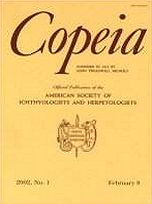The genus Sebastes contains over 110 species, an unusually high level of species diversity for marine fishes. Many of the 70 species that occupy the northeast Pacific Ocean coexist during parts or all of their life cycle. Although allopatric speciation explains much of this diversity, the presence of many closely related species within the same locations suggests that other isolating mechanisms may play a role. Sebastes carnatus and Sebastes chrysomelas are a sympatrically distributed pair of sister species having no morphologically distinguishing characteristics other than color: S. carnatus has pinkish spots on a brown background, and S. chrysomelas has yellow spots on a black background. In this study, seven nuclear microsatellite DNA loci were employed to assess relatedness of 111 S. carnatus and 91 S. chrysomelas sampled from three locations spanning the species' range. Analysis of the seven microsatellite loci provided evidence of genetic divergence between color morphs (FST = 0.046, P < 0.0001). Furthermore, magnitude of genetic divergence between the color morphs was consistent among geographic locations. Divergence between S. carnatus and S. chrysomelas was low relative to that detected among other species within the genus, suggesting that the two morphs represent reproductively isolated incipient species.
BioOne.org will be down briefly for maintenance on 17 December 2024 between 18:00-22:00 Pacific Time US. We apologize for any inconvenience.
How to translate text using browser tools
1 December 2004
Genetic Divergence between Gopher Rockfish (Sebastes carnatus) and Black and Yellow Rockfish (Sebastes chrysomelas)
Shawn R. Narum,
Vincent P. Buonaccorsi,
Carol A. Kimbrell,
Russell D. Vetter
ACCESS THE FULL ARTICLE





